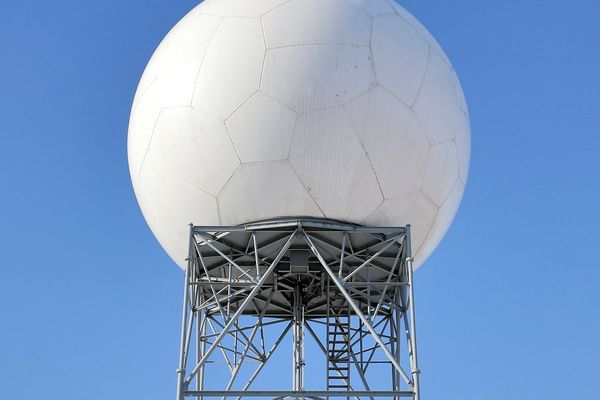
Khirbet al-Ras al-Ahmar, occupied West Bank – Thaer Bsharat is one of 130 Palestinians living in this remote village in the northern Jordan Valley. They have little means, but a lot of determination.
Bsharat was born and raised in the occupied West Bank village, which is surrounded by two illegal Israeli settlements and two Israeli military bases. It was declared a closed military zone more than two decades ago.
The very presence of the Palestinians, let alone any structure they erect, is deemed “illegal” under Israeli law.
Most of the residents in Khirbet al-Ras al-Ahmar cultivate land and raise livestock.
“I can preach for hours about the need to remain steadfast, but I also have nowhere else to go with my sheep,” Bsharat told Al Jazeera, explaining why he has never left the village to live somewhere else.
In April, Israeli forces raided Khirbet al-Ras al-Ahmar and confiscated several tractors, trolleys and cars. Water tanks had been confiscated a few months prior, all on the pretext that they had entered Firing Zone 901 – a designated Israeli military training area – leaving most of the locals with no access to water and no means of transportation.
The 30-year-old Bsharat had to turn to his trusted Hanan – his donkey, whose name means “compassion” – to transport milk barrels through the muddy hills outside the village so he could sell them.
“Instead of moving forward, we’re being pushed back,” he said of Israeli encroachment.
Israel has long said it intends to maintain military control over the 2,400-square-kilometre (927-square-mile) Jordan Valley for security reasons, even though Palestinians seek it for the eastern perimeter of a future Palestinian state in the West Bank and blockaded Gaza Strip.
Resistance-based resilience
That state still does not exist. Instead, the Palestinian Authority (PA) has limited governance in the West Bank.
Since it was established in 1994, the PA has issued several development plans.
The government’s mission is to promote resistance-based resilience and build national institutions, the PA’s last plan, published in 2019, said. While such plans are meant to be roadmaps for policymakers, they are also presented to the international donor community to attract aid.
“Donors come with their own agendas and we have our own priorities. Alignment is difficult to achieve, but in recent years our priorities have become clearer,” Estephan Salameh, the Palestinian prime minister’s adviser for planning and aid coordination, told Al Jazeera.
Israel, however, has different priorities and Palestinian development appears to not be one.
“Israel is determined to not allow the Palestinians to develop economically and socially because this is part of Palestinian self-determination, which Israel has consistently denied,” Tariq Dana, a professor of conflict and humanitarian studies at the Doha Institute for Graduate Studies, told Al Jazeera.
Israel has full control over more than 60 percent of the occupied West Bank – designated under the Oslo Accords as Area C – in addition to its natural resources and borders, and has the power to confiscate land, prevent industrialisation and control monetary policies.
In essence, analysts argue, Israel has been “de-developing” the occupied Palestinian territory by eradicating all conditions necessary to achieve development.
“Israel forced the Palestinians into a situation of structural dependency on its economy,” Dana said.
‘Stabilising the situation’
Overall, donors have spent more than $40bn on Palestinians since the Oslo Accords were signed in 1993, rendering Palestinians one of the highest per capita recipients of nonmilitary aid in the world.
The money goes into three different baskets, Salameh explained: budget support, humanitarian aid and development.
The figures and ratios vary, but development aid never made up more than 30 percent of the incoming money, at best, he added.
According to Salameh, donations to the PA have been steadily declining since 2011, with 2021 being the worst on record in terms of budget support. PA figures from 2022 show $231m in aid going towards the budget, the second lowest since 2004. International aid initially earmarked to foster the peace process could not keep it alive. Priorities for all those involved have changed, several times, and so have the amounts granted.
In the early PA years, money was pumped in to create an atmosphere that would support the two-state solution, and then to foster institution-building and execute reforms.
In recent years, stabilisation has leaked into the international donor community vocabulary.
“They know they’re only stabilising the situation until something political happens,” Salameh said.
However, the question of whether the status quo should be maintained is often answered with another: What’s the alternative?
Detached from a political process, the continued provision of aid by donors is excused by citing the “need to protect the viability of the two-state solution”.
But behind closed doors, diplomats who spoke to Al Jazeera question what they are investing in.
In public and donors’ terms, aid in the current atmosphere is not a comprehensive approach that will tackle the core issues facing the Palestinians.
“We’re trying to address at a micro-level things we need to address at a macro-level,” former head of the European Union mission to the PA, Sven Kuhn von Burgsdorff, told Al Jazeera. “It might seem futile in the short term … We’re actually sustaining the hope of the Palestinian people.”
‘Israeli colonial dynamics’
Despair and not hope, however, is the sentiment most Palestinians have, particularly in places such as the Jordan Valley.
The PA has little jurisdiction over the area that makes up roughly one-third of the occupied West Bank and is considered its breadbasket.
Palestinian officials said they opt for foreign donor support to protect the small projects they can build in the Jordan Valley, but even that does not always work.
Israel demolished more than 950 Palestinian-owned structures in the occupied West Bank last year, 177 of which were in the Jordan Valley.
Since 2016, Israel has demolished European Union-funded structures worth more than $2.3m.
While it may sound counterintuitive, Israel has previously requested that the international community provide aid to the PA.
In fact, Israel’s Prime Minister Benjamin Netanyahu reportedly asked ex-President Donald Trump in 2019 to allow American aid to be transferred to PA security forces at a time when Washington had cut all funds to the Palestinians.
“Aid to the PA is subject to the geopolitical considerations … It aims to achieve levels of stability and pacify the Palestinians while leaving Israeli colonial dynamics undeterred,” Dana said.
No official figures are available as to how much international aid goes towards security, but it is estimated that nearly one-third is allocated to the sector.
PA security expenses in 2022, according to the Civil Society Team for Enhancing Public Budget Transparency, are estimated at $1bn, most going towards salaries.
Education and health sector expenses followed with 20 percent and 14 percent, respectively, of the total $4.7bn budget.
According to the 2022 PA budget, the agricultural sector’s share is shy of $67m.
In Khirbet al-Ras al-Ahmar, Bsharat said local officials visited the village in solidarity and promised to help.
When he asked for a tractor a few days afterwards, he said, they suggested he borrow one from his neighbours – but theirs were confiscated as well.
Hanan the donkey was all he had until he could come up with $1,500 to get back his tractor, which is worth less than $3,000, from the Israelis.
Two months later he had paid the fine and the tractor was back, although he said some engine parts were missing.
“We’re losing our health and wealth, we’re losing our dignity … only to stay where we are,” he said.







